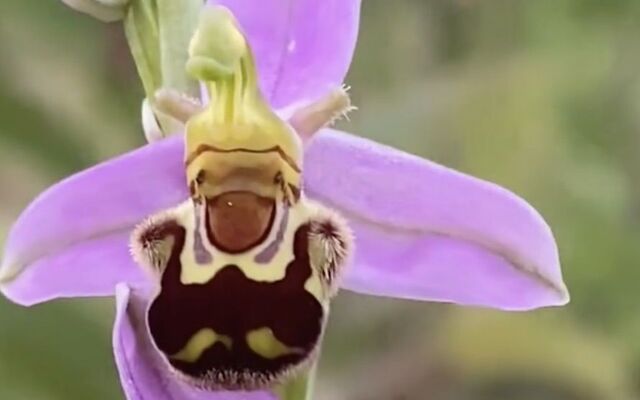THE eagle has landed – and on our own Black Mountain.
Bird expert Aidan Crean holds the irrefutable evidence in his hand in this picture. It’s a bird of prey’s pellet – the regurgitated bones that they cough up – that was found at the top of the famous hill overlooking West Belfast. And this week it was confirmed by experts that it came from an eagle.
It was found by our hillsides’ guardian Aaron Kelly – and it was so big – bigger than any pellet he had ever found – that he immediately suspected it was from an eagle.
“I was walking around all the posts at the top of the mountain looking for pellets – I was hoping to find signs of a barn owl up there. I found buzzard, kestrel and hen harrier pellets – but then I saw this massive one on a patch of low grass.
“I thought it must be from an eagle – now I know it is. People think eagles just feed on big animals, but they’re opportunistic and will go for small mammals like shrews and mice and where I found the pellet is also on a part of the mountain where you get hares – so they must have landed here to feed on mice or even a hare."
Aaron contacted the Irish Golden Eagle Trust who confirmed it was from an eagle.
“Black and Divis Mountain connect Lough Neagh to the Irish Sea – so I always knew that eagles would possibly travel across here,” Aaron said.
But Aaron fears the Black Mountain eagles may have had a tragic end.
“I spoke to a couple of hillwalkers who know their birds and they told me that some time before, they saw two white-tailed eagles hunting on the hill. And that was around the time two of these majestic birds were found poisoned about 20 miles away in May. I think they were the same birds.”
The white-tailed eagle – iolar mara or sea eagle in Irish – was persecuted to extinction in Ireland 100 years ago but has recently been reintroduced to the country it once ruled.
One of the poisoned birds had been born in Norway before being released near the Shannon River just a year before it met with a cruel death. The work of so many people in so many countries was ruined by one cruel person in Antrim – who has yet to be prosecuted.
Aaron says: “It’s so tragic. I’d say they were on our hill that morning, feeding on the ground – the pellet is proof. They may have been on their way towards Rathlin but as they passed near Larne they were lured to the ground and killed.
“I’ve never seen eagles on our hills – but now we know they have been there, and for all we know they use our hills a lot.”
Years ago eagles were common above the Belfast hills. In Ireland’s first bird book in 1850, William Thompson tells how he was hunting with dogs on Divis when a golden eagle swooped down and picked up the hare they were chasing. Aaron says plenty of work needs to be done to enhance the hills to attract eagles back.
“At the minute they’ll pass over and maybe stop for a while. But there are not enough big trees for them to stay. We need a forest and we’ve been planting a lot in some areas, but we need more. I mightn’t see eagles breeding here in my lifetime – but hopefully future generations will when those trees mature.”
Aidan Crean said Aaron’s detective work had reinforced just how important our hills are on a national level.
“It just takes an eagle high up in the sky a few wingbeats to travel miles. If they are breeding anywhere in Ireland, the juveniles will travel far and wide to explore new territories and potential nest sites,” he said.
“We know now they landed on the Black Mountain this year and we should be doing all we can to make our hills a place where eagles can thrive once more.”
Dúlra once travelled with Aidan on a golden eagle expedition to Donegal – but although we found its eyrie in the mountains high above Glenveigh, we didn’t manage to spot one. In fact, Dúlra has never seen an eagle in Ireland – proof that the authorities simply haven’t tried hard enough to reverse the effects of the persecution of this glorious bird, which continues to this day.
Rather than travelling to Donegal to see one, maybe Dúlra just needs to spend more time on our own Black Mountain.
* If you’ve seen or photographed anything interesting, or have any nature questions, you can text Dúlra on 07801 414804.







